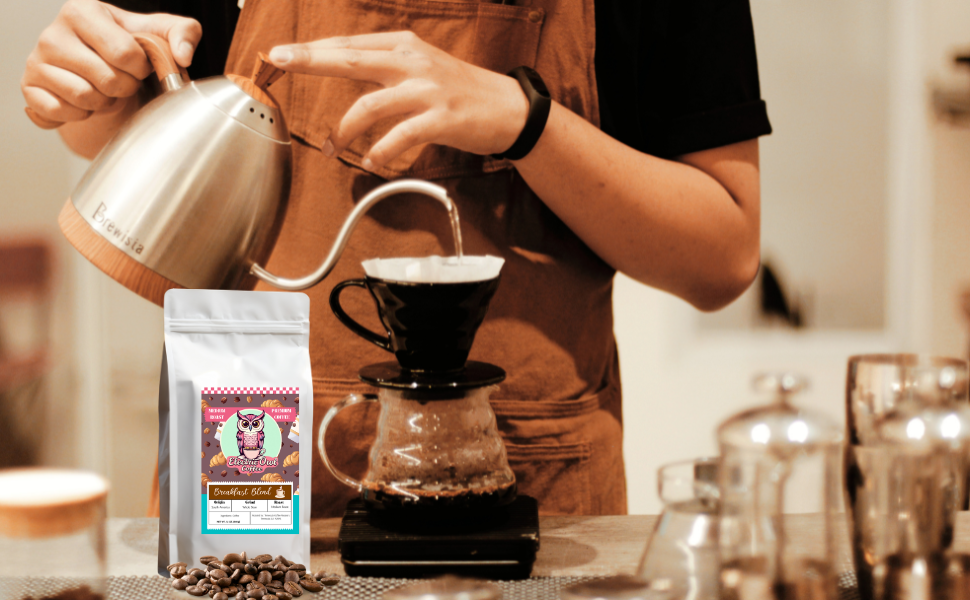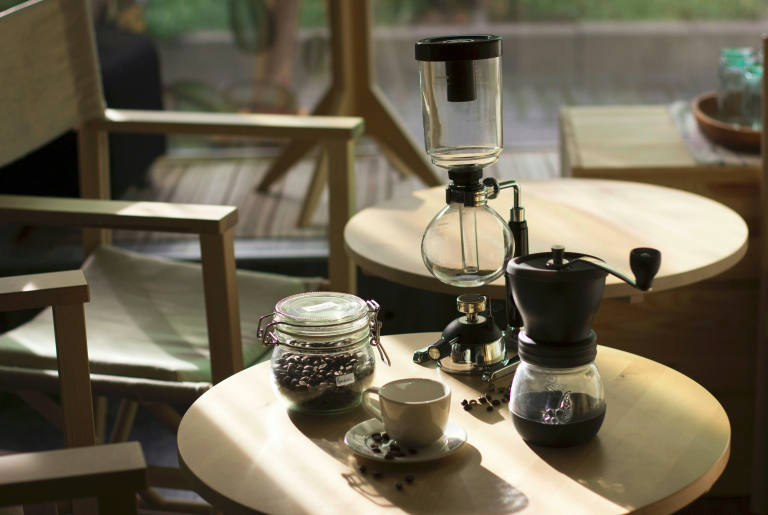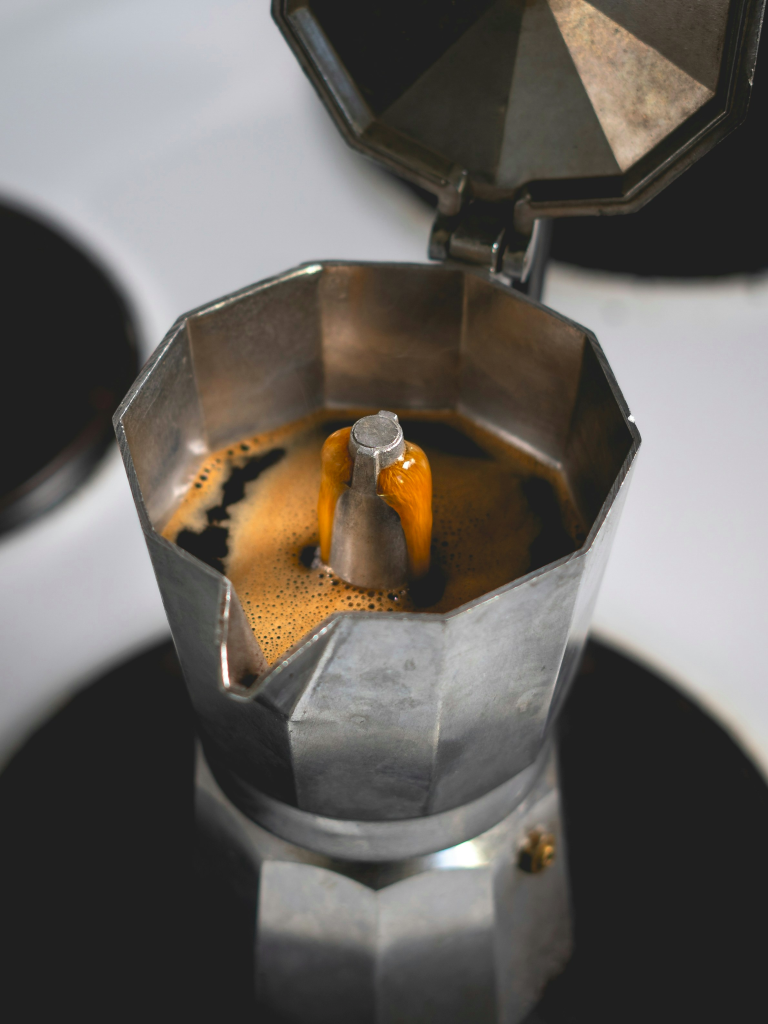Free Shipping on all U.S. orders $50+
The Best Way to Brew Fresh Roasted Coffee: A Complete Guide to Perfect Coffee at Home

Fresh roasted coffee beans hold the key to exceptional coffee experiences. When you understand how to properly brew fresh roasted coffee, you unlock flavors and aromas that pre-ground or stale coffee simply cannot deliver. This comprehensive guide will teach you the best methods to brew fresh roasted coffee and elevate your daily coffee ritual.
Why Fresh Roasted Coffee Makes All the Difference
Fresh roasted coffee beans contain volatile compounds that create the complex flavors we love in our morning cup. These compounds begin to dissipate immediately after roasting, which is why timing matters so much. Coffee reaches its peak flavor between 2-14 days after roasting, making fresh roasted coffee significantly superior to store-bought alternatives that may have been sitting on shelves for weeks or months.
The difference between fresh roasted coffee and stale coffee is remarkable. Fresh beans release CO2 when brewing, creating that beautiful “bloom” when hot water hits the grounds. This degassing process is essential for proper extraction and indicates you’re working with truly fresh roasted coffee.
Essential Equipment for Brewing Fresh Roasted Coffee
Coffee Grinder: Your Most Important Tool
A quality burr grinder is crucial for brewing fresh roasted coffee properly. Blade grinders create uneven particle sizes that lead to over-extraction and under-extraction in the same cup. Burr grinders provide consistent particle size, which is essential for even extraction when brewing fresh roasted coffee.
Brewing Methods for Fresh Roasted Coffee
Different brewing methods highlight different aspects of fresh roasted coffee:
Pour Over (V60, Chemex, Kalita Wave): These methods offer excellent control over extraction and highlight the nuanced flavors in fresh roasted coffee. The paper filters create a clean cup that showcases the coffee’s natural characteristics.
French Press: This immersion method produces a full-bodied cup that emphasizes the oils and deeper flavors in fresh roasted coffee. The metal filter allows more oils through, creating a richer mouthfeel.
AeroPress: This versatile method combines immersion and pressure brewing, making it forgiving for beginners while still producing excellent results with fresh roasted coffee.
Espresso: The gold standard for concentrated coffee, espresso requires precise grinding and timing to extract the best from fresh roasted coffee beans.
Step-by-Step Guide: How to Brew Fresh Roasted Coffee
1. Choose Your Fresh Roasted Coffee Beans
Look for coffee with a roast date within 2-14 days of brewing. Avoid coffee without roast dates, as these beans are likely stale. Fresh roasted coffee should have a slight sheen from natural oils and should smell fragrant when you open the bag. Electric Owl’s entire coffee selection is roasted fresh daily and shipped right away, preserving maximum freshness.
2. Measure Your Coffee and Water
The ideal coffee-to-water ratio for most brewing methods is 1:15 to 1:17. For every gram of fresh roasted coffee, use 15-17 grams of water. This ratio ensures proper extraction without over-concentrating or diluting your brew.
3. Grind Your Fresh Roasted Coffee
Grind your fresh roasted coffee immediately before brewing. Different brewing methods require different grind sizes:
- Espresso: Fine grind
- Pour over: Medium-fine grind
- French press: Coarse grind
- Cold brew: Extra coarse grind
4. Water Temperature and Quality
Use water heated to 195-205°F (90-96°C) for optimal extraction of fresh roasted coffee. Water quality matters tremendously – filtered water produces better results than tap water with high mineral content or chlorine.
5. Brewing Time
Brewing time varies by method:
- Pour over: 2-4 minutes
- French press: 4 minutes
- AeroPress: 1-2 minutes
- Espresso: 25-30 seconds
Common Mistakes When Brewing Fresh Roasted Coffee
Using Stale Coffee
Even with perfect technique, stale coffee will never produce exceptional results. Always prioritize fresh roasted coffee beans with clear roast dates.
Incorrect Grind Size
Using the wrong grind size is one of the most common mistakes. Too fine, and you’ll over-extract bitter compounds. Too coarse, and you’ll under-extract, leading to weak, sour coffee.
Inconsistent Water Temperature
Water that’s too hot will scorch your fresh roasted coffee, while water that’s too cool won’t extract properly. Invest in a thermometer or variable-temperature kettle for consistent results.
Poor Water Quality
Great fresh roasted coffee can be ruined by poor water. Use filtered water for the best results, especially if your tap water has strong mineral or chlorine flavors.
Storing Fresh Roasted Coffee Properly
Proper storage extends the life of your fresh roasted coffee. Store beans in an airtight container away from light, heat, and moisture. Avoid refrigerating or freezing fresh roasted coffee, as this can introduce moisture and affect flavor. A cool, dark pantry is ideal for storing fresh roasted coffee beans.
Advanced Tips for Perfect Fresh Roasted Coffee
Bloom Your Coffee
When brewing fresh roasted coffee with pour-over methods, start with a small amount of water to “bloom” the coffee. This releases CO2 and prepares the grounds for even extraction.
Experiment with Ratios
While 1:15 to 1:17 is a good starting point, don’t be afraid to adjust based on your taste preferences and the specific fresh roasted coffee you’re using.
Track Your Variables
Keep notes on grind size, water temperature, brewing time, and ratios. This helps you replicate great cups and troubleshoot issues with your fresh roasted coffee brewing.
Taste and Adjust
Pay attention to how your fresh roasted coffee tastes. If it’s too bitter, try a coarser grind or lower water temperature. If it’s too sour or weak, try a finer grind or higher temperature.
The Science Behind Fresh Roasted Coffee Extraction
Understanding extraction helps you brew better fresh roasted coffee. During brewing, water dissolves soluble compounds from the coffee grounds. The goal is to extract the flavorful compounds while avoiding over-extraction of bitter elements.
Fresh roasted coffee extracts differently than stale coffee because the cell structure is more intact and the compounds are more volatile. This is why fresh roasted coffee often requires slight adjustments to your usual brewing parameters.
Conclusion: Mastering Fresh Roasted Coffee
Brewing exceptional fresh roasted coffee requires attention to detail, quality equipment, and practice. Start with high-quality fresh roasted coffee beans, invest in a good grinder, and focus on consistency in your brewing process. Remember that the best way to brew fresh roasted coffee is the method that produces the flavors you enjoy most.
The journey to perfect fresh roasted coffee is ongoing. Every new bag of beans offers an opportunity to refine your technique and discover new flavors. With these fundamentals in place, you’re well on your way to brewing café-quality fresh roasted coffee at home.
Whether you prefer the clarity of pour-over brewing or the richness of French press, the principles remain the same: use fresh roasted coffee, grind consistently, maintain proper ratios, and pay attention to your brewing variables. Master these elements, and you’ll consistently brew fresh roasted coffee that rivals the best coffee shops.



